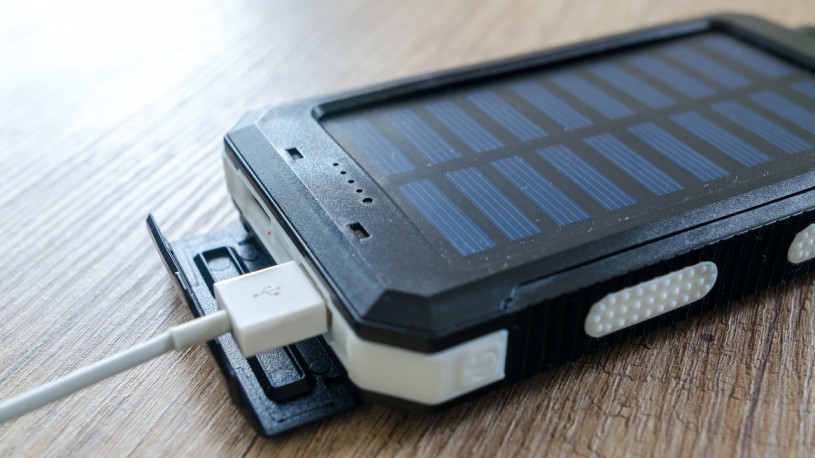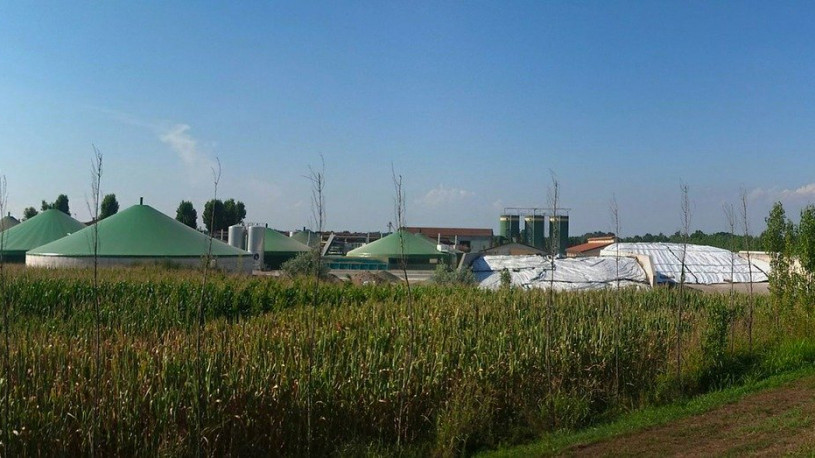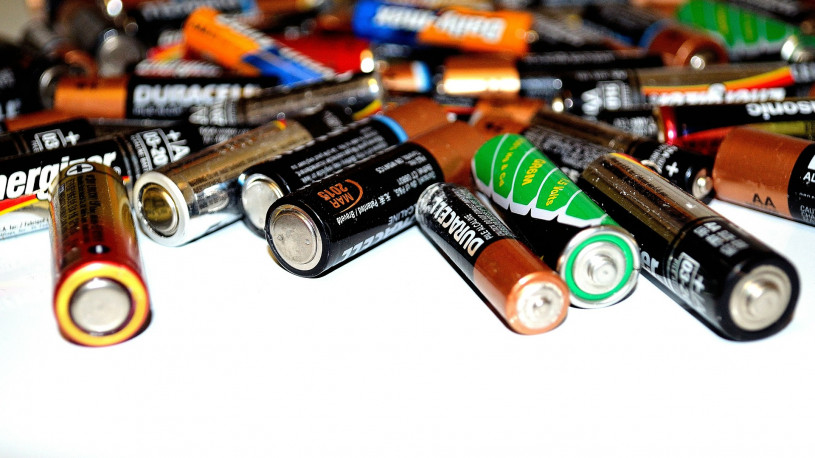-
Better and Cheaper Fuel Cells using Bimetallic Aerogels
 Continue Reading
Continue ReadingResearchers believe they have found a breakthrough nanomaterial that can be applied in making fuel cells perform better. As the new material uses fewer noble metals such as palladium and platinum, the research should also lead to cheaper battery feedstock.
The study was conducted by a team from Washington State University, and was centred on the development of a super low density substance called an aerogel.
Aerogels are solid materials that are sometimes called ‘liquid smoke’ due to the fact that they are more than 90% air. They can often be found in wet suits, fire fighting equipment, paint and windows as they act as excellent insulators, but they are also used in fuel cells as they have a large surface area and are highly porous, making them great for fuel cell catalysts.
As the online journal Phys.org reports, “Researchers introduced copper in the bimetallic system through their new, one-step reduction method to create hydrogel. The hydrogel is the liquid-filled form of aerogel. The liquid component is carefully and completely dried out of the hydrogel to create aerogel.”
The study was published in the journal Advanced Materials, where the production technique was explained as follows, “To accelerate hydrogel formation and further simplify the synthetic procedure, a series of MCu (M = Pd, Pt, and Au) bimetallic aerogels is synthesized from the in situ reduction of metal precursors through enhancement of the gelation kinetics at elevated temperature. Moreover, the resultant PdCu aerogel with ultrathin nanowire networks exhibits excellent electrocatalytic performance toward ethanol oxidation, holding promise in fuel-cell applications.”
By creating bimetallic aerogels using inexpensive copper, the researchers were able to reduce the amount of precious metal needed, thus lowering costs. The use of metals such as platinum and palladium his has been a major design flaw in hydrogen fuel cells, which although offer a ‘promising green energy solution, producing electricity much more efficiently and cleanly than combustion engines’, remain an expensive alternative.
Better still, is the fact that the production method for the aerogel is quicker than normal. As the Washington State University website reports, “They [the researchers] also sped up the time to make the aerogels, which makes them more viable for large-scale production.” Something that is described by research team member and assistant research professor Chengzhou Zhu as, “A great advantage for large scale production.”
With the world in need of ever larger and more powerful fuel cells, this discovery is sure to draw plenty of interest from battery manufacturers and fuel cell feedstock suppliers. This is especially true given that the research has provided not only a better performing battery, but also a cheaper one, that uses less noble metal.
How this will affect platinum or palladium prices is not yet known.
Photo credit: Washington State University
-
A New Technique for Biofuel Production; Cheaper and without Antibiotics
 Continue Reading
Continue ReadingResearchers at MiT have discovered a new metabolic engineering technique for producing liquid biofuels and biochemicals that the study shows to be more efficient and cheaper than traditional methods. Furthermore, the technique eliminates the need to use antibiotics, further lowering costs and reducing the biofuel industry’s impact on the global antibiotic shortage.
The problem occurs because conventional biofuel and biochemical production can become contaminated by unwanted bacteria that enter the process. These undesirable microbes then compete for nutrients with the target bacteria, reducing yields and productivity.
For this reason, many biochemical and biofuel processes use ethanol as a feedstock as it has a natural toxicity to most bacteria, but not the target microorganism (the yeast Saccharomyces cerevisiae) that is used to ferment it. But ethanol is not always a suitable biochemical feedstock, particularly for more complex biochemical production and highly advanced biofuels. In these situations the problem must be solved either with antibiotics, which can lead to tolerant bacterial strains, or by using a steam-based process that kills off the unwanted microorganisms, but at a high cost.
But all that may now change, as researchers have found a new technique that, according to reports from MiT uses, “engineered microbes, such as Escherichia coli, with the ability to extract nitrogen and phosphorous — two vital nutrients needed for growth — from unconventional sources that could be added to the fermentation vessels.” The report continues to explain that, “because the engineered strains only possess this advantage when they are fed these unconventional chemicals, the chances of them escaping and growing in an uncontrolled manner outside of the plant in a natural environment are extremely low.”
For example, conventional biochemical techniques often use ammonium as a source of nitrogen for the growth of their microorganisms. However, the unwanted bacteria, Lactobacilli, can also extract nitrogen from ammonium, and so competes for resources with the targeted organism. To combat this, the research team engineered microbes that can take their nitrogen from melamine, a “xenobiotic, or artificial, chemical that contains 67 percent nitrogen by weight”. As the unwanted bacteria cannot extract nitrogen from melamine, they struggle to grow and compete with the target.
As the researchers, Gregory Stephanopoulos, the Willard Henry Dow Professor of Chemical Engineering and Biotechnology at MIT, and Joe Shaw, senior director of research and development at Novogy, explained when they published their findings in the journal Science, “We engineered Escherichia coli to assimilate melamine, a xenobiotic compound containing nitrogen. After adaptive laboratory evolution to improve pathway efficiency, the engineered strain rapidly outcompeted a control strain when melamine was supplied as the nitrogen source.” The regular bacteria “need that special pathway to be able to utilize melamine, and if they don’t have it they cannot incorporate nitrogen, so they cannot grow.”
The team have now noted a synthetic six-step pathway which, “allows it to express enzymes needed to convert melamine to ammonia and carbon dioxide, in a strategy they have dubbed ROBUST (Robust Operation By Utilization of Substrate Technology).”
But the work did not stop there, as the online journal ScienceDaily reports, “the researchers engineered both S. cerevisiae and the yeast Yarrowia lipolytica to use potassium phosphite as a source of phosphorus, [and found that] like the engineered E. coli strain, both the engineered yeasts were able to outcompete naturally occurring strains when fed on these chemicals.”
What is more the study seems to show that the technique could be commercialised fairly rapidly, with few problems foreseen in up scaling. As the MiT website states, “The paper provides a novel approach to allow companies to select for their productive microbes and select against contaminants”. Whilst Jeff Lievense, a senior engineering fellow at the San Diego-based biotechnology company Genomatica who was not involved in the research, stated that, “In theory you could operate a fermentation plant with much less expensive equipment and lower associated operating costs.” Lievense continued, “I would say you could cut the capital and capital-related costs [of fermentation] in half, and for very large-volume chemicals, that kind of saving is very significant.”
With such a mandate for expanding this technique into mass-production, how long will it be before engineered microbes are commonplace in the biofuel and biochemical industries? And if the financial savings are as apparent as they seem to be, how long will it be before biochemicals and biofuels are the dominant sources of feedstock for … well … everything?
Photo credit: Novogy
-
The Invention of a Self-Destructing Dissolving Battery
 Continue Reading
Continue ReadingScientists from the University of Iowa have developed a water soluble battery that is able to deliver a charge capable of powering a desktop calculator for 15mins. The charge is 2.5 V. The battery dissolves in water in 30 minutes.
The discovery is being held as a major leap forward in the field of transient electronics, an area of research that for years has been trying to make temporary electronic devices that self-destruct or dissolve when a trigger is applied.
Whilst a major breakthrough was made last year with the development of water soluble silicon, many transient electronic devices still needed an external non-transient power source. Attempts to create a transient battery have until now been unsuccessful, as researchers had been unable to develop one that could, as the online journal Futurism reports, “demonstrate the power, stability and shelf life for practical use”.
As the research team outline in their report, published in the Journal of Polymer Science; Part B Polymer Physics, previous efforts have included, “a swallowable battery based on Zn and Pt electrodes and ceramic porous separator [with a] maximum potential of 0.42 V and current of 2.41 mA”; “edible water activated sodium batteries based on melanin electrodes where a potential of 0.6–1.06 V and current of 5–20 μA was achieved”; plus “An intrinsically transient battery capable of environmental resorption where Mg anode and biodegradable metals (Fe, W, or Mo) cathodes were used with a transient polymer casing [with] potentials ranging from 0.45 to 0.75 V”
But now a breakthrough has been made, which the technology journal Engadget describes as a, “one-millimeter-thick and five-millimeter-long device [that] uses typical lithium-ion technology. Unlike typical batteries though, it’s encased in a degradable polymer composite that swells and eventually breaks apart in water.”
The research team explained their use and selection of polymers, “PVA and PVA composites were used as binder, substrate, and casing materials, due to its ease of control over transiency rate and fabrication. Subsequently, PVA chains are eventually solvated and the membrane dissolves in the solvent. Lithium cobalt oxide, LiCoO2, (LCO), and Li4Ti5O12 (LTO) were used as the ultimate cathode and anode active materials, respectively.”
Although dissolvable, lead researcher, Reza Montazami, an Iowa State University assistant professor of mechanical engineering and an associate of the U.S. Department of Energy’s Ames Laboratory, was quick to point out that the battery doesn’t completely disappear. Instead, the battery contains “nanoparticles that do disperse as the battery’s casing breaks the electrodes apart”, something that he calls, “physical-chemical hybrid transiency.”
While the discovery is significant and has obvious practical uses, the researchers do warn that the product will not be for sale soon, as, “While promising, it will probably take some time before the team can make a version that can power more sophisticated electronics. They still have to figure out how to scale up a battery that has multiple layers and has such a complex structure.”
Development of the transient battery was supported by funding from Iowa State’s Presidential Initiative for Interdisciplinary Research and the department of mechanical engineering.
Whilst the battery is clearly a fantastic invention, entrepreneurs are now considering where the battery would be best used. The researchers themselves suggested on the Iowa State University website that, “Self-destructing electronic devices could keep military secrets out of enemy hands. Or they could save patients the pain of removing a medical device. Or, they could allow environmental sensors to wash away in the rain.”
All of which are great suggestions, but the question remains, “Where would you apply a self-destructing dissolvable battery?”
Photo credits: Iowa State University

